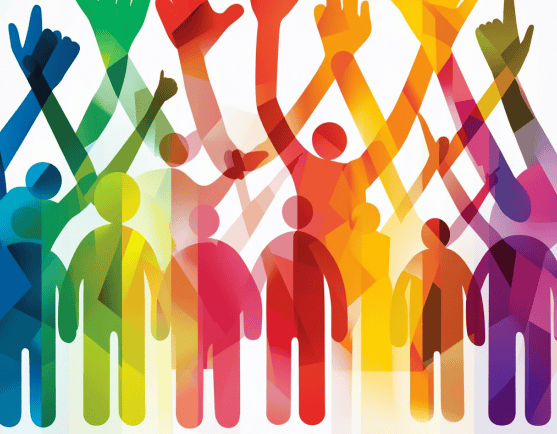Inclusive Language: A Guide for Trainers
An overview and step-by-step guide to using inclusive language in training materials with a free download to help you!
LEARNING OUTCOMESINLCUSIONACCESSIBILITYINCLUSIONINCLUSIVE LANGUAGE
10/10/20243 min read


TL;DR:
Using inclusive language in your training sessions is key to fostering an environment where everyone feels respected, valued, and heard. Inclusive language means using terms that don’t exclude any group, particularly in relation to gender, ability, and cultural backgrounds. In this guide, we provide simple steps and tips to start integrating inclusive language into your training, from using gender-neutral terms to avoiding ability-based assumptions.
Key Takeaways:
Use gender-neutral language to avoid making assumptions.
Be mindful of ability-based phrases—choose words that respect all learners.
Avoid assumptive language regarding relationships or identities.
Introduction: Why Inclusive Language Matters in Training
Inclusive language is about more than just avoiding offensive words—it's about ensuring that all learners feel included, regardless of their gender, ability, or background. Whether you’re conducting an in-person workshop or running an online course, using inclusive language can remove barriers and create a welcoming environment where learners feel safe and respected.
According to the United Nations' Disability-Inclusive Communication Guidelines, inclusive language reflects the diversity of society and is essential for ensuring full participation of all individuals (United Nations, 2022). As a trainer, adopting inclusive language not only enhances the learning experience but also helps to build trust and engagement with your audience.
Step-by-Step Guide: How to Use Inclusive Language in Your Training
Here’s how you can integrate inclusive language into your training sessions to create an inclusive and respectful learning environment.
1. Use Gender-Neutral Terms
Using gender-neutral terms helps avoid assumptions about your learners’ gender identities. Terms like “guys,” “he,” or “she” are often used out of habit, but they can exclude non-binary or gender-diverse individuals.
How to Change It:
Instead of "Hey guys," say "Hey everyone," "team," or "folks."
Use "they" instead of "he" or "she" when the gender is unknown or irrelevant.
Replace "manpower" with "workforce" or "staff."
Example:
Instead of: "Each participant should raise his hand if he has a question."
Say: "Each participant should raise their hand if they have a question."
Why It Matters:
Using gender-neutral language ensures that no one feels excluded based on their gender identity. It's a simple adjustment that helps to foster inclusivity, ensuring everyone feels welcomed.
2. Be Mindful of Ability-Based Language
Phrases like "That’s crazy" or "She’s blind to the issue" may seem harmless but can be hurtful to people with disabilities. These terms use disability-related language negatively, perpetuating harmful stereotypes.
How to Change It:
Replace "crazy" with "surprising" or "unexpected."
Replace "blind to" with "unaware of" or "ignoring."
Use neutral phrases like "See the issue clearly" instead of "not blind."
Example:
Instead of: "That’s a crazy idea!"
Say: "That’s an unexpected idea!"
Why It Matters:
The Disability Etiquette Guide (United Spinal Association, 2023) emphasizes that being mindful of language related to disabilities is essential for creating an inclusive environment. By avoiding phrases that tie negative traits to disabilities, you ensure that your training space is welcoming to all.
3. Avoid Assumptive Language
In day-to-day speech, it's easy to make assumptions about someone’s identity, relationships, or background. For instance, phrases like "husband" or "wife" assume traditional relationships, which may not reflect the identities of your learners.
How to Change It:
Use "partner" instead of "husband" or "wife."
Avoid assuming religious or cultural homogeneity with phrases like "everyone celebrates Christmas."
Be mindful of using terms that assume shared experiences (e.g., using U.S.-centric references in international groups).
Example:
Instead of: "Ask your wife to sign the form."
Say: "Ask your partner to sign the form."
Why It Matters:
Inclusive language around relationships and identities is important for ensuring that everyone feels recognized and respected. By avoiding assumptions, you foster a more inclusive and supportive learning environment for people of all backgrounds.
Why Inclusive Language Should Be a Priority in Training
Using inclusive language is not just about avoiding mistakes—it’s about creating a learning space where all participants feel respected and valued. This practice is essential for promoting an environment that recognizes and celebrates diversity, rather than excluding or marginalizing individuals based on gender, ability, or identity.
According to research by Reilly and Reeves (2022), inclusivity is a critical component of learner-centered design, which is key to improving engagement and satisfaction in learning environments. This highlights the importance of adopting inclusive practices to ensure the success of your training programs.
Free Resource: Inclusive Language Cheat Sheet
To help you get started, download our Inclusive Language Cheat Sheet. This printable guide includes common phrases to avoid and suggestions for more inclusive alternatives that you can start using in your training sessions.
Download the Cheat Sheet Here:
Conclusion
By incorporating inclusive language into your training sessions, you are actively creating a more welcoming and supportive environment for all learners. These small, intentional changes in your vocabulary can make a big difference in how your learners feel during your sessions, helping to foster a space where everyone can thrive.
Start implementing these easy tips today and watch your training sessions transform into spaces of inclusivity and respect!
References
Reilly, C., & Reeves, T. C. (2022). Refining active learning design principles through design-based research. Active Learning in Higher Education, 25(1), 81–100. https://doi.org/10.1177/14697874221096140
United Nations. (2022). Disability-inclusive communications guidelines. https://www.un.org/disabilitystrategy
United Spinal Association. (2023). Disability etiquette: Tips on interacting respectfully with people with disabilities. https://www.unitedspinal.org
Tech Inclusion Pro LLC
COntact us:
techinclusionpro@gmail.com
© 2024. All rights reserved.